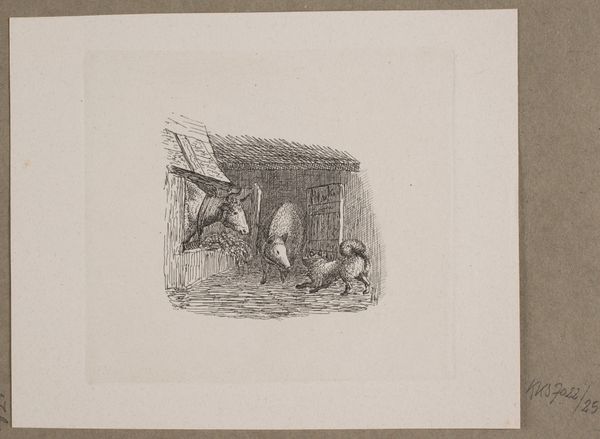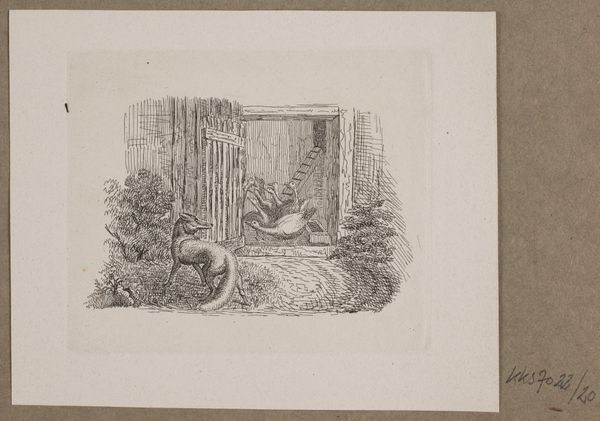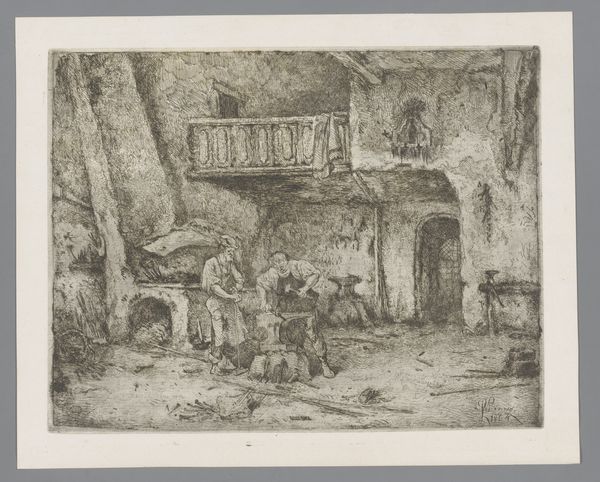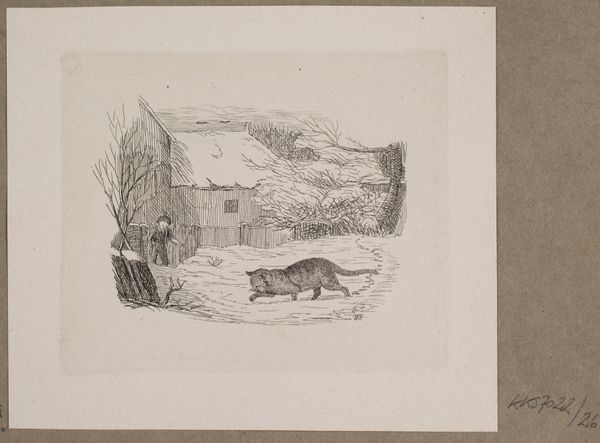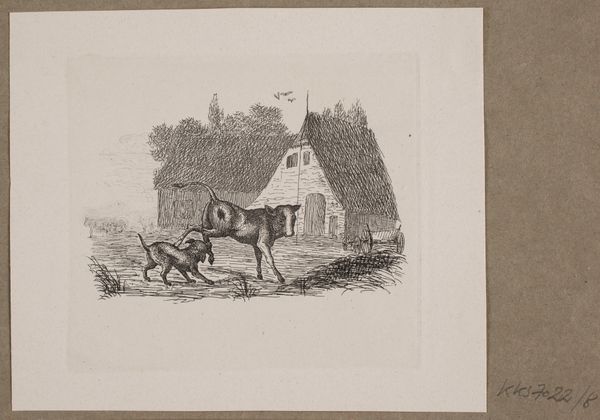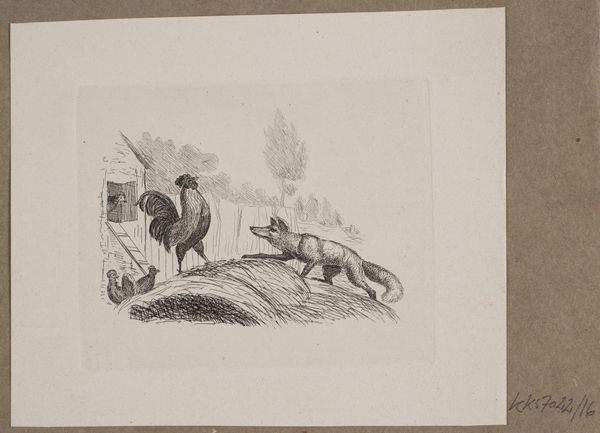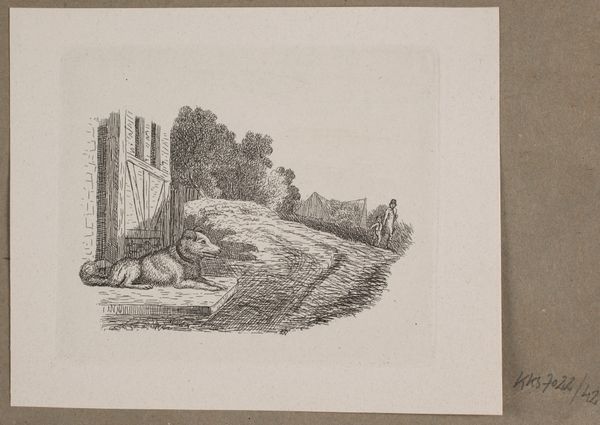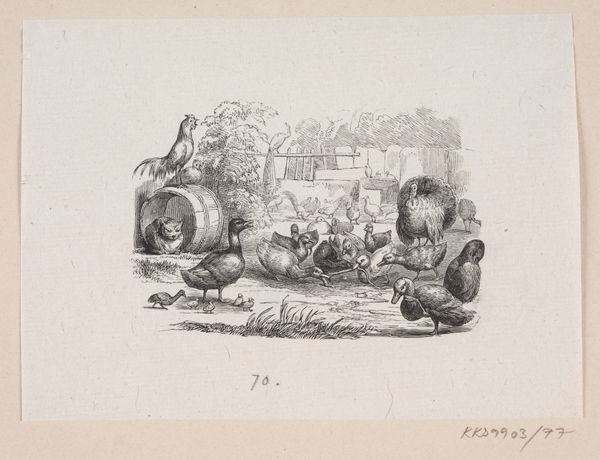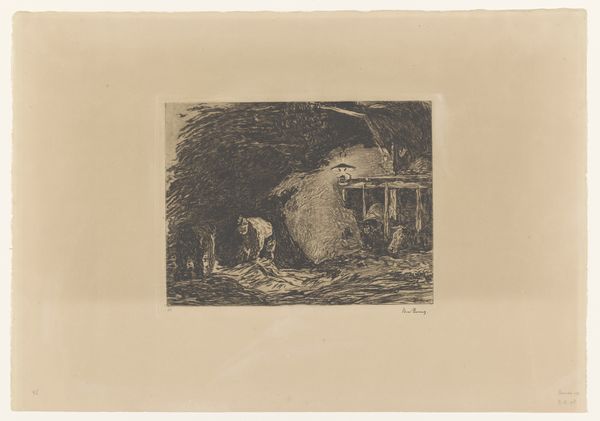
print, engraving
#
narrative-art
# print
#
landscape
#
figuration
#
folk-art
#
romanticism
#
line
#
genre-painting
#
engraving
Dimensions: 88 mm (height) x 110 mm (width) (plademaal)
Editor: Here we have Vilhelm Kyhn's 1838 engraving, "Illustration til O. Specter, \"Fabler for Børn\"." It's quite intricate, a miniature world teeming with animals. What strikes you most about this print? Curator: What interests me is the way this seemingly simple image embodies the complexities of 19th-century print culture. Consider the materials: the paper itself, likely mass-produced; the metal plate used for the engraving, crafted by skilled artisans. How do these choices affect our reading of the 'folk art' elements within? Editor: I hadn't thought of it that way. I was focused on the idyllic scene. Are you saying that the medium itself carries a message? Curator: Precisely! Engraving, as a reproducible medium, allowed for wider dissemination of these fables. It democratized access, but it also industrialised art production. Look closely at the lines; each one is a result of labor, both artistic and mechanical. Does this impact how we perceive the "Romanticism" associated with this piece? Editor: So, the act of creating prints itself brought these stories to the masses. In comparison, think of the solitary, individual labor involved in creating paintings by hand for the elite. This makes me consider that print-making also shaped the cultural understanding of "narrative art". Curator: Exactly. The engraving isn't just depicting a fable, it's participating in a larger socio-economic narrative. Editor: This changes how I'll look at prints from now on, knowing it's more than the illustration itself but rather a network of labor and material concerns. Curator: I agree. Reflecting upon art beyond its aesthetic values is a necessary step in challenging artistic conventionality and valuing alternative means of expression.
Comments
No comments
Be the first to comment and join the conversation on the ultimate creative platform.
